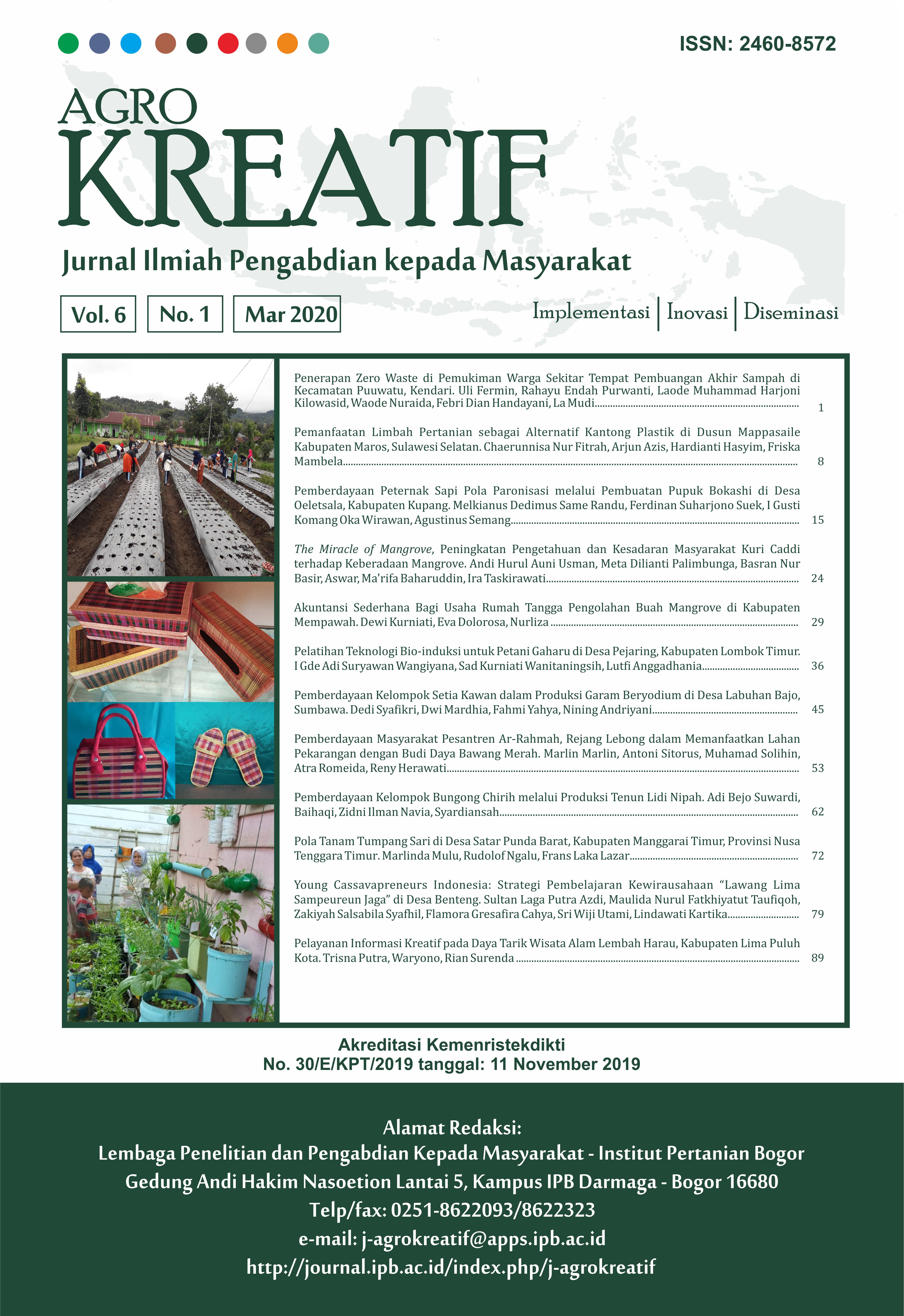Pemberdayaan Masyarakat Pesantren Ar-Rahmah, Rejang Lebong dalam Memanfaatkan Lahan Pekarangan dengan Budi Daya Bawang Merah
Abstract
The community empowerment in the area of Ar-Rahmah pesantren, Air Meles Atas Village, Rejang Lebong Regency, Bengkulu was intended to increase the income of pesantren to finance poor students, and at the same time to enhance the ability of pesantren in carrying out educational and teaching activities. Community service activities carried out in the form of assistance activities in shallot cultivation in the yard of the Ar-Rahmah Pesantren. The assistance program is carried out for 4 months, with such stage of activities as: the preparation stage for managers, teachers, students and farmers around the pesantren, seed selection, land preparation, planting, maintenance, harvesting, and post-harvest. The evaluation result showed that the community participation and involvement in the shallot cultivation assisting program were considered high. The highest participation rates were during the selection of seed activity (73%) and planting activity (100%). Meanwhile, the lowest participation rate was during maintenance activities (27%). The evaluation results showed the level of participants’ satisfaction is high (90‒100%) on the implementation of assistance activities. The harvested shallots could increase the income of the boarding school which can be used to help the education cost and education progress of the boarding school. The participation of the entire community would be encouraged so that the success of empowerment program could be felt by the entire community. The community empowerment program need to be carried out continuously, so it would enhance the welfare of and self-sufficiency of the community.
Downloads
References
Hilman Y, Rosliani R, Palupi ER. 2014. Pengaruh ketinggian tempat terhadap pembungaan, produksi, dan mutu benih botani bawang merah. Jurnal Hortikultura. 4(2): 154−161. https://doi.org/10.21082/jhort.v24n2.2014.p154-161
Karsidi R. 2002. Pemberdayaan masyarakat petani dan nelayan kecil. Semiloka Pemberdayaan Masyarakat di Jawa Tengah dalam Rangka Pelaksanan Otoda, Badan Pemberdayaan Masyarakat Jateng, Semarang (ID) 4‒6 Juni 2002.
Karsidi R. 2007. Pemberdayaan masyarakat untuk usaha kecil dan mikro (pengalaman empiris di Wilayah Surakarta Jawa Tengah). Jurnal Penyuluhan. 3(2): 136‒145. https:// doi.org/10.25015/penyuluhan.v3i2.2161
Mahmudi A. 1999. Prinsip-Prinsip Pemberdayaan Masyarakat. TOT P2KP oleh LPPSLH, Ambarawa (ID).
Pretty J. 1995. “Regenerative Agriculture: Policies and Practice for Sustainability and Self-reliance”. London (EN): Earthscan.
Silkhondze WB. 1999. The role of extension in farmer education and information dissemination in Swaziland. Adult Education and Development, 53.
Suherman R, Basuki RS. 1990. Strategi pengembangan luas areal usaha tani bawang merah (Allium cepa var. ascalonicum) di Jawa Barat: tinjauan dari segi biaya usahatani terendah. Bulletin Penelitian Hortikultura. Edisi khusus XVIII(1): 11-18.
Sulistiyani AT. 2004. Kemitraan dan Model-Model Pemberdayaan. Yogyakarta (ID): Gaya Media.
Sumodiningrat G. 2000. Visi dan Misi Pembangunan Pertanian Berbasis Pemberdayaan. Yogyakarta (ID): IDEA.
Widjajanti K. 2011. Model pemberdayaan masyarakat. Jurnal Ekonomi Pembangunan. 12(1): 15‒27. https://doi.org/10.23917/jep.v12i1.202
This work is licensed under a Creative Commons Attribution-NonCommercial 4.0 International License.



















